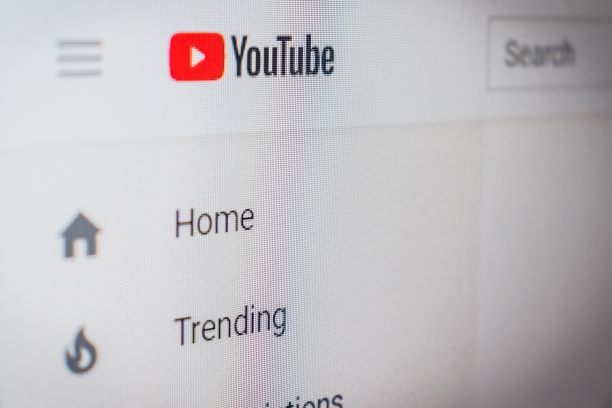Online videos account for 80% of all consumer internet traffic. Here are some video marketing platforms that make data analysis easy.
The importance of video marketing cannot be overstated. By 2019, video traffic will account for 80% of all consumer internet traffic, and one-third of all online activity is spent watching video content. If your company is looking to expand its presence online, video is the way to go.
We get it, you’re not a data scientist, you’re just a marketing manager, coordinator, or intern looking to increase the company’s online presence. Here’s the thing, you don’t need to be a data scientist to receive valuable information from your videos. There is a plethora of platforms out there with readymade tools that data-driven will make you a data-driven video professional. But which ones should you use? That’s why we’re here! In this post, you’ll find what we, the Data Science Dojo Video Team, picked as our top video marketing platforms.
YouTube
YouTube needs no introduction. Nearly one out of every two internet users are on YouTube, and the site is the second largest search engine on the web. Because of YouTube’s rapidly growing popularity, it shouldn’t come as a surprise this would be the first platform on our list.

At its core, YouTube is a video hosting platform that uses your content as the business model, much like Facebook. It’s the reason all the tools are free to use, otherwise, it wouldn’t have caught on as quickly.
Features:
- Create & customize your own channel
- Integrations with Google Analytics & tools
- Subscribers, Likes, Sharing buttons
- Free Live streaming
- Powerful recommendation engine
- Subtitle generation
- Scheduling public videos
- Advertising using uploaded videos
YouTube is almost the complete package when it comes to video marketing. But remember, YouTube’s business is keeping users on the site, so the tools they give you are designed to do just that. This can bring complications if the goal is to send users to your site. This brings us to the pros and cons of using YouTube as a platform.
Pros:
- Massive user base
- No upload limits
- Monetization options
- Google search SEO
- Powerful analytical dashboards
- Can upload almost anything
Cons:
- Very competitive
- Strict content ID system
- Restrictions on linking interactive media
- Very limited embedding options
- No security on videos
- Lacking support/help articles
- Ads on the videos
- Other channels are advertised with the recommendation engine
Don’t underestimate how difficult it will be to get a foothold on your target audience. Since YouTube is so massive, there is a ton of competition to have the top video in the search results. Therefore, it’s important to know how your videos rank in the system. Applying plugins can help you understand and analyze your video rankings. We use VidIQ and TubeBuddy to help us with our rankings.
- Tubebuddy: Allows users to quickly manage their YouTube channels and improve SEO, views, and subscriber growth. While it has some SEO features, it focuses more on Bulk updating and ease of use.
- VidIQ: More focused on SEO, it has a more robust tagging system and a nice cleanly laid out interface. If SEO is what you want, look no further.
There’s no harm in using both as the “free” features are more than enough to get you going. We do suggest paying the extra money for Tubebuddy as the features it adds are time-saving, especially on larger channels.
Vimeo pro

Vimeo is the closest competitor to YouTube with over 700 million active users. However, Vimeo caters to a completely different audience. Vimeo is considered the “professional” choice when it comes to video hosting platforms. This is largely to do with the better compression and lack of ads on the site. A lot of Indy filmmaker content is found there, and they push that genre much higher than, say a tutorial.
Regardless, It is another great video-sharing platform that offers some unique features over its competitors.
- No advertisements
- A cleaner and more customizable layout
- A wider range of embedding options
- More interaction elements
- Greater security for your content
- Higher quality encoding
- Branding customization
- Hide videos from Vimeo and keep them public
The cons of using Vimeo:
- Lower viewer numbers
- No advertising options
- Must pay for advanced features
- Upload limits
- Lacks automatic subtitle options
- Lacks bulk updating
- Limited integrations and 3rd party support
- Live streaming is expensive
- No scheduling options
Unlike YouTube’s features, Vimeo’s are not entirely free. Vimeo currently offers five membership plans, which vary in features and upload limits. With the free plan, you can see very basic analytics like:
- The number of times your video was loaded
- The number of plays, finishes, likes and comments
- Your most popular videos
For a marketer, that is not good enough, so upgrading to a Pro plan allows you to see engagement and duration graphs. This makes the analytics much more like YouTube’s.
Depending on the content you produce, Vimeo is a great tool, but for gaining visibility, it may not be the right tool since YouTube has twice the users. It is also worth noting that YouTube is a Google product and Vimeo is not. This means Google will place YouTube videos much higher on search results than Vimeo, but sometimes Google will display the same video from both platforms.

It’s not outlandish to use both platforms, but because Vimeo requires a paid plan to get deeper analytics, YouTube may still be a better choice.

Facebook is the most popular social media site on the planet. With over 2 billion active users, it is not slowing down. When you think of video platforms, Facebook is not one of them, but it has recently been making steps to change this fact. It is definitely behind when it comes to the likes of Vimeo and YouTube, especially in the metrics department. However, it has been busy adding new features that make the platform hard to ignore.
Facebook features:
- A New creator studio for video management and performance monitoring
- Returning viewers vs new metrics
- Metrics specific to Facebook news feed
- Ad performance monitoring
- Retire and backdate video posts
- Facebook Live Streaming
- Automatic Captioning
In recent years, Facebook has been pushing users to start uploading videos to their platform. With this push, they have been treating posts with YouTube and Vimeo links as thumbnails instead of embedding the content. This explains why Facebook has been adding video tools so quickly. But as it is, Facebook is best used as a supplemental platform and not the main driver of your content.
Facebook pros:
- 2 Billion users
- Free Live Streaming
- Free video tools
- Has a multitude of apps that work with it
- No Ads in videos
Facebook cons:
- Closed platform (can’t embed posts)
- No Google Search Results
- Interface has a slight learning curve
- Lacks depth in metrics
- No interactive content
If you’re looking to market to Facebook users, it’s better to use Facebook’s native video hosting and not just because of the embedding issues. Since Facebook videos don’t show up on web search results, Facebook is considered a closed garden in terms of video hosting. But that’s why Facebook should be supplemental to YouTube or Vimeo as it is a social media site first, video hosting second.

Other up-and-coming video platform options are:
None of these tools is perfect, each one has its pros and cons, audiences, and metrics. However, using them together and understanding your data can provide you with the knowledge you need to continue putting out quality content. Take the time to understand the tools as well as the data they provide and see how you can use them to your advantage.
In the next blog, we will explore video metrics and how to manage them using online tools!
Written by Eric Durkopp


